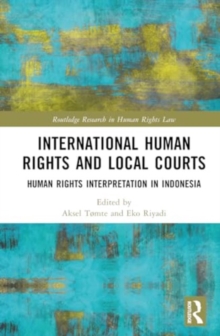
Children's Rights Law in the Global Human Rights Landscape : Isolation, inspiration, integration? PDF
Edited by Eva (Ghent University, Belgium) Brems, Ellen (University of Antwerp and Ghent University, Belgium) Desmet, Wouter (University of Antwerp, Belgium) Vandenhole
Part of the Routledge Research in Human Rights Law series
Description
Children’s rights law is often studied and perceived in isolation from the broader field of human rights law.
This volume explores the inter-relationship between children’s rights law and more general human rights law in order to see whether elements from each could successfully inform the other.
Children’s rights law has a number of distinctive characteristics, such as the emphasis on the ‘best interests of the child’, the use of general principles, and the inclusion of ‘third parties’ (e.g. parents and other care-takers) in treaty provisions.
The first part of this book questions whether these features could be a source of inspiration for general human rights law.
In part two, the reverse question is asked: could children’s rights law draw inspiration from developments in other branches of human rights law that focus on other specific categories of rights holders, such as women, persons with disabilities, indigenous peoples, or older persons?
Finally, the interaction between children’s rights law and human rights law – and the potential for their isolation, inspiration or integration – may be coloured or determined by the thematic issue under consideration.
Therefore the third part of the book studies the interplay between children’s rights law and human rights law in the context of specific topics: intra-family relations, LGBTQI marginalization, migration, media, the environment and transnational human rights obligations.
Information
-
Download - Immediately Available
- Format:PDF
- Pages:326 pages
- Publisher:Taylor & Francis Ltd
- Publication Date:21/04/2017
- Category:
- ISBN:9781317268055
Information
-
Download - Immediately Available
- Format:PDF
- Pages:326 pages
- Publisher:Taylor & Francis Ltd
- Publication Date:21/04/2017
- Category:
- ISBN:9781317268055










